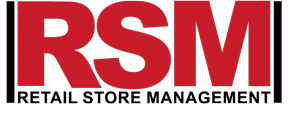
Introduction
“The moment you make a mistake in pricing, you’re eating into your reputation or your profit” – Katherine Paine
Product pricing is one of the 4P’s of the marketing mix, and a critical element of your revenue generating and competitive capacity. The other elements of the marketing mix are the product (merchandise), place (location), and promotion (advertising). According to a Harvard study, a mere 1% correction in your pricing strategy can add as much as 11% to your profit margin. Inappropriate pricing can adversely affect your retail business. Too low a price can create an impression of low quality. Unsuitably high pricing may affect your competitiveness in a product category. As
a retail brick-and-mortar store entrepreneur or manager, to get the best-fit for marketing 4P’s, you should design and balance your pricing strategy with other elements of the marketing mix, while staying profitable as a business entity. You should be crystal clear about your pricing objectives, the policy guidelines for attaining your stated pricing objectives, what strategic pricing options you should employ, the appropriate implementation strategy, and what adjustments to make from time to time to comprehensively align your pricing strategy with all the other elements of the marketing mix. Let’s examine each of the five pricing elements of a good pricing strategy.
- Your pricing Objectives
The road-map to arriving at your competitive product assortment pricing objectives should start with your understanding of Michael Porters 5-forces. This is an invaluable strategic tool. Let me shed more light on each element of the 5-force strategic elements
- Know the powers of your main competitive rivals: as an independent retail brick-and-mortar business, you should research your main competitive rivals and the resources at their disposal. Because your physical store is located in a fixed location (Place), your competition may be localized. The competitiveness of these rivals will have a profound effect on your ability to set prices for your product assortment categories. If any of your physical brick-and-mortar stores are located within the vicinity of a retail chain, like Walmart, Target, Shoprite, or an independent large retailer, your capacity to set prices will hinge on both the offers and price points set by these more powerful retailers.
- Know what the entry barriers are: if your offerings are high priced branded products, like custom-made pieces of jewelry, the entry barrier will be high and you can charge premium prices as your customers may not be price-sensitive. On the other hand, for low-priced commodity products, the entry barrier may be low and competition stiff. In such a case, you may compete on price, with no-frills, like Poundland in the United Kingdom, and Dollar Shop in the United States.
- Know what the entry and exit barriers are: the entry and exit barriers for commodity products like unbranded beef, grains, and fuel are low but high for custom-designed brands like Rolex watches, specialty culinary products for a special occasion, power bikes and accessories, luxury cars like Ross Royce, Ferrari, Jaguar brands. Market competition for commodity products is commonly price-based, and both the entry and exit barriers are low. For premium products, the entry barrier is mostly high. Competition is moderate and quality perception is value-driven; the higher the price, the more exclusive its value perception, and the higher your profit margin, though your sales volumes may usually be lower, compared with commodity products.
- Know what the substitute products and channels are: for retail brick-and-mortar store business, your most competitive source might be e-commerce sites who lack your investment in legacy fixed assets like buildings, and other operating assets like shelves, gondolas, water, electricity, fittings and fixtures, parking lot, and so on. These assets will bear heavily on your breakeven pricing and sales volume.
- Know the threats posed by new entrants: the decision by a giant retail chain to open a store, stocking same product assortment categories like yours may impair your capacity to fix prices as you may lack the capacity to source at the heavily discounted bargain prices of a giant retail chain can.
- Your Pricing Policy
Your pricing policy is a document that codifies how you will price the products in your brick-and-mortar store. The main advantage of codified pricing policy is that it removed or moderates guess-working in your products pricing and that it addresses your pricing objectives. In codifying your general pricing policy, you should take into consideration a number of factors; namely,
- Your profit and sales goals: your pricing policy must reflect your profit and sales goals. Determine all the components of your Cost of Goods Sold or your Cost of Sales, Gross Margin, Earnings before interest, taxes, Depreciation, and Amortization (EBITA). From an accurate determination of your EBITA, you can project the minimum sales volume that you must attain to remain in business. There are today many vendors of Enterprise Resource Program (ERP) software designed for these purposes. Some known ERP software brands include that may suit an independent retailer include:
- quickbooks.com
- netsuite.com
- Microsoft Dynamics
- syspro.com
- epicor.com
- sage.com
- The state of competition in your market: today’s consumer is savvy. Before embarking on her shopping trip, your prospective customer may have browsed for the items she desires with her smartphone device. Though the price may not be her sole consideration, nevertheless, the price may rank high in her decision-making process about where to buy. Your store atmospherics, store location, ease of web-browsing your store, price comparison and previous buying experience may most likely affect her decision to visit your physical store. Therefore, your pricing policy should take these factors into consideration.
- Your comprehensive business goal: in designing your pricing policy, bear in mind that profit maximization should not your only consideration. This may sound counterintuitive, but market growth and your share of the market slice are also important. If your focus is pure profit, you may run yourself out of business as you pay less attention to customer experience, competitive pressure, customer relationship management, and all the other elements that are vital to the attainment of your overall retail business goal.
- Your Pricing Strategic Options
There is no one-size-fits-all pricing strategic option available to all retail stores. You must choose from an array of pricing strategies based on your customer profile, profit goals, the market share desired, store(s) location, the competition. Some key options to consider are:
- Premium pricing: a premium pricing strategy is effective when a product or brand is perceived as unique, of high quality, is in its early product life cycle, and merchandised in a visually appealing store layout environment. Apple stores and its visual display tactics, store atmospherics, customer total store experience, and early product life cycle for each model are great examples of how to earn premium prices for a retailer.
- Market penetration pricing: the concept of penetration pricing is premised on the assumption that when a product is introduced to the market, lowering its initial selling price will moderate the misgivings of customers to try it out. This is designed to rapidly gain market acceptance for new products. Market penetration pricing is usually offered at lower prices to create awareness and attract consumers from established brands. Because you may be losing money at the early stage of penetration, you should increase your offer price once you are convinced that you have created sufficient brand awareness in the market segment of the product or brand.
- Economy pricing: the purpose of economy pricing is to target price-sensitive consumers. In some cases, economy pricing has a no-frills pricing component. Low-cost everyday pricing strategy is usually employed by retail chains like Shoprite, Walmart, Target, and even Amazon online e-commerce. As an independent retail brick-and-mortar store, you must employ this pricing strategy with caution as you may lack the economy of scale and the bargaining power of retail giants. As an independent retailer, you may consider using this pricing strategy for your most loyal customers to retain their patronage and even increase the basket size of their purchases.
- Price skimming: for unique, high quality and scarce products at an early stage of their product life cycle, you can employ a price skimming strategy to skim-off a higher profit margin before the product or brand or similar products or brands, becomes widely available and competitive pressure forces you to lower your price to retain your market share.
- Psychology pricing: many studies have shown that for certain price range, the use of the number “9” or “5” is effective. For instance, consumers are more pre-disposed to purchase an item that sells for $3.99 than for the same product priced at $4. Though the price differential is only one penny, the subconscious mind pays more attention to the left side number of the displayed price, and the mind will more often round-down a number than round it up. Your customer will pay more attention to $3 than to $4, though the difference is insignificant. The psychology of odd-numbers works more for women fashions apparel retailing than it does on their male counterpart.
- Bundle pricing: if you sell complementary products, then you should also consider the psychology of bundle-pricing. Restaurants are adept at employing bundle-selling pricing. Take KFC for instance, when you order fried chicken, the attendant will almost always ask you if you want your chicken with fries and a cola drink. Supposed you ordered a 9-piece takeaway chicken with fries and a drink, the chances are that the attendant will draw your attention to a much less pricey 21-piece take-way with more frills at a lower bargain bundle price. Cable TV retailers are also adept at offering bundle-priced products. Bundle-pricing, also known in economics as “consumer plus” is premised on the notion that you can capture more revenue by creating an illusion of surplus. Consumers are much more willing to pay for a bundle that cost the same compared to when the same items are priced separately. This illusion of a bargain price could be used in bundling together products from different categories in your retail brick-and-mortar store. It is also an effective tactic for impulse buying.
Conclusion
In the final anaysis, you shouild begin with an industry analysis and they key competitors in your market. Design your pricing stratgy by taking into consideration your value proposition, the product or service life cycle of your offer. carry out a thorough situation analysis. Do you intent to compete as a cost leader? Do you want to offer differentional in your choice of strategy? Will cost focus or value cost be right for you? know both the demographics and psychographics of you market segment. Then tailor you price to sync with the answers to these questions.



